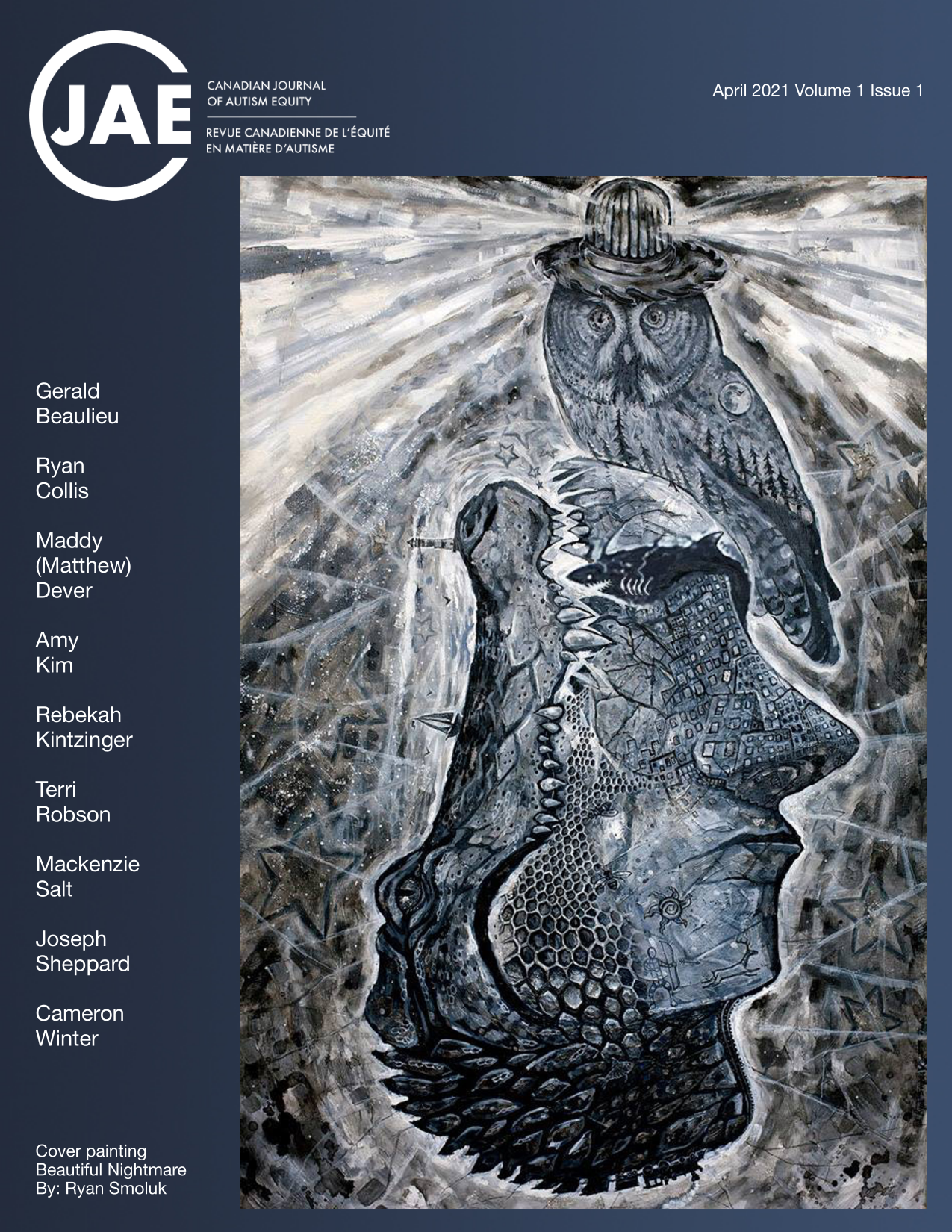Soutenir la culture autistique dans la définition de l'identité autistique Editorial
DOI :
https://doi.org/10.15173/cjae.v1i1.4983Mots-clés :
Autisme, Culture, Handicap, IdentitéRésumé
Les adultes autistes qui ont reçu un diagnostic tardif et qui sont également des artistes actifs sont très susceptibles de trouver, dans leurs oeuvres, des indices de leur identité. Cela leur donne l’occasion de réévaluer la signification de leur travail à travers une optique plus précise et un contexte approprié. Cela incite également les spectateurs et le public à faire de même et à confronter leurs idées fausses. Ces préjugés sont susceptibles de s’étendre à toutes les formes de production culturelle. Les artistes autistes et handicapés n’ont donc qu’une empreinte très réduite et non reconnue dans notre paysage culturel actuel. Il est donc nécessaire de rectifier la situation en rejetant les vieux stéréotypes et en établissant dans nos institutions publiques des programmes d’engagement ciblés envers la culture autiste.
Références
Hull, L., Petrides, K. V., Allison, C., Smith, P., Baron-Cohen, S., Lai, M. C., & Mandy, W. (2017). "Putting on My Best Normal": Social Camouflaging in Adults with Autism Spectrum Conditions. Journal of autism and developmental disorders, 47(8), 2519–2534. https://doi.org/10.1007/s10803-017-3166-5
Berry, A. (2017, December 21). Disability is the Poor Relation of Identity Politics. Disability Arts Online. https://disabilityarts.online/magazine/opinion/disability-poor-relation-identity-politics/
Téléchargements
Publié-e
Comment citer
Numéro
Rubrique
Licence
(c) Tous droits réservés Gerald Beaulieu 2021

Cette œuvre est sous licence Creative Commons Attribution - Pas d'Utilisation Commerciale - Partage dans les Mêmes Conditions 4.0 International.
Les auteur·rices conservent leur droit d’auteur et accordent à la Revue le droit de première publication. L’œuvre est placée sous une licence Creative Commons Attribution qui permet à d’autres de partager l’œuvre avec une reconnaissance de la paternité de l’œuvre et de sa publication initiale dans cette revue.
Les auteur˙rices peuvent conclure des accords contractuels distincts et supplémentaires pour la distribution non exclusive de la version publiée de l’œuvre dans la Revue (par exemple, la déposer dans un dépôt institutionnel ou la publier dans un livre), avec une reconnaissance de sa publication initiale dans cette Revue.
La RCEA accepte les articles qui n’ont pas été publiés dans d’autres revues, suivant une autorisation de droits d’auteur, et qui n’ont pas été soumis à l’examen d’autres revues au moment de leur soumission à la Revue canadienne de l’équité en matière d’autisme. Pendant qu’un article est en cours d’examen par la RCEA, vous acceptez de ne pas soumettre le travail à d’autres revues jusqu’à ce que l’examen de la RCEA soit terminé et qu’une décision ait été rendue.



